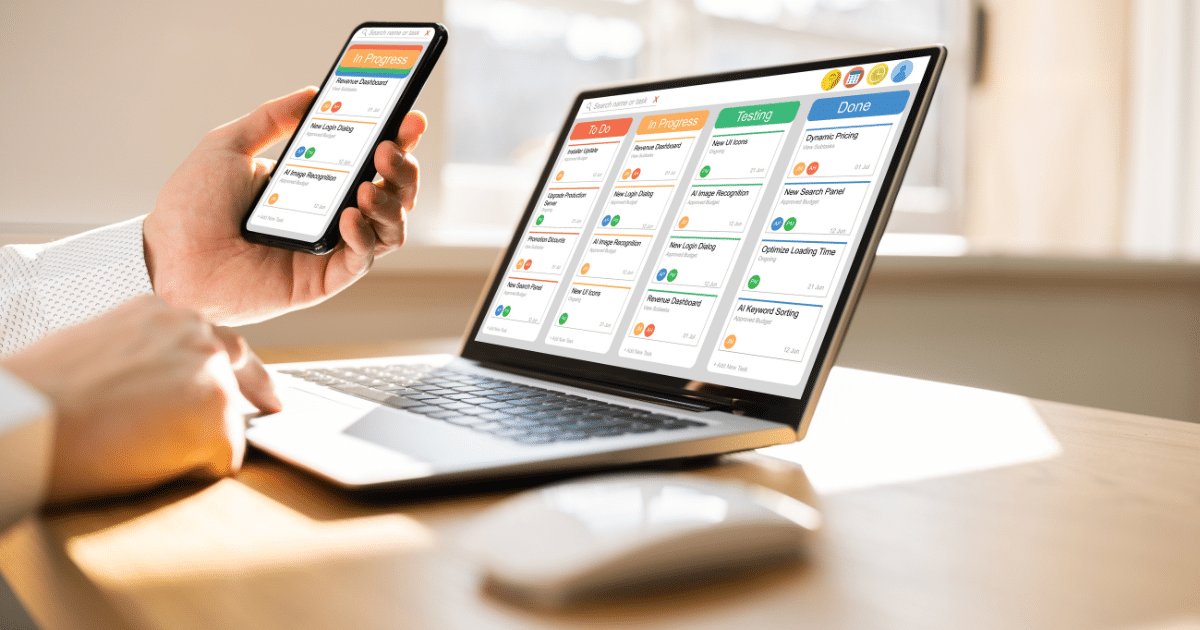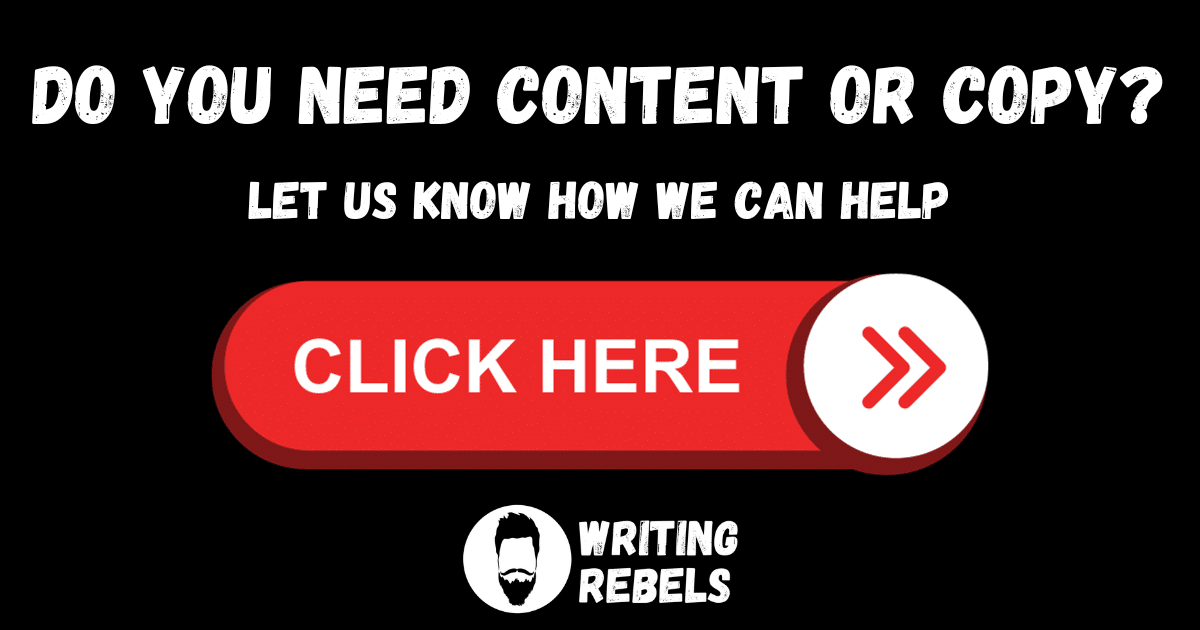
While many people think the key to building out content that converts is simply the creation process itself, staying organized and strategic is essential for success. That’s where a content calendar comes into play. A content calendar is a powerful tool that helps businesses plan, structure, and execute their content marketing efforts efficiently.
In this article, we’ll dive deeper and explore the benefits of using a content calendar and how it can help you maximize your marketing efforts.
The Content Calendar: An Essential Marketing Tool
A content calendar, often referred to as an editorial calendar, is a visual representation of your content strategy. It outlines what content you will create, when you will publish it, and where it will be distributed. It acts as a roadmap for your marketing efforts, keeping you on track and organized.
Related Article: The Power of Blogging — Why Every Business Should Start a Blog
Here’s why utilizing a calendar is indispensable:
1. Consistency
Consistency is key in content marketing. Your audience should know when to expect new content from you. A content calendar enables you to maintain a regular posting schedule. Whether it’s daily, weekly, or monthly, consistency helps build trust and keeps your audience engaged.

2. Improved Planning
A content calendar allows you to plan your blog posts in advance. It helps you align your content with important dates, events, and product launches. You can strategize content themes, promotions, and seasonal campaigns, ensuring that your marketing efforts are well-coordinated.
3. Content Variety
To keep your audience engaged, you need a diverse range of content. A content calendar lets you mix and match different content formats, such as blog posts, videos, infographics, and podcasts. This variety keeps your content fresh and appealing to different segments of your audience.
4. Efficient Workflow
With a content calendar, you can assign tasks and responsibilities to team members. This promotes a collaborative approach to content creation and ensures everyone is on the same page. It streamlines the workflow, reduces duplication of efforts, and enhances productivity.
5. Optimized Distribution
Your content needs to be shared across various platforms to reach a wider audience. A content calendar helps you plan the distribution of your content across social media, email marketing, and other channels. This ensures that your content is maximally exposed.
6. Data-Driven Decision-Making
By using a content calendar, you can track the performance of your content over time. This data can help you make informed decisions about what works and what doesn’t. You can adjust your content strategy based on the analytics and continuously improve your marketing efforts.

Benefits of a Content Calendar
Now that you understand the fundamental role of a content calendar in content marketing, let’s dive deeper into its benefits and how it can significantly boost your marketing efforts:
1. Enhanced Productivity
A well-structured content calendar eliminates the last-minute scramble to create and publish content. With a clear plan in place, you can work efficiently and stay ahead of deadlines. This leads to higher productivity and better results.
2. Time Management
Time management is a critical aspect of content marketing. A content calendar helps you allocate your time effectively, ensuring that you have enough time for research, content creation, editing, and distribution. It prevents the stress of rushed, low-quality content.
3. Better Quality Content
When you plan your content in advance, you can devote more time to research and crafting high-quality content. Quality content is more likely to engage your audience and generate positive results.

4. SEO Optimization
Content calendars allow you to strategically incorporate keywords and SEO techniques into your content. This, in turn, improves your search engine ranking, driving more organic traffic to your website.
5. Audience Engagement
With a content calendar, you can create content that resonates with your audience. It enables you to address their pain points, answer their questions, and provide valuable information. Engaging content keeps your audience coming back for more.
6. Brand Consistency
A consistent brand image is vital for building trust with your audience. Your content calendar helps you maintain brand consistency by ensuring that your content aligns with your brand’s values, tone, and style.
7. Adaptability
While planning your content in advance, you can also be flexible and adapt to current events or trends. A content calendar can accommodate last-minute changes and new opportunities without disrupting your overall content strategy.
8. Reduced Stress
Without a content calendar, content creation can be stressful and chaotic. The organization provided by a calendar reduces stress and helps you maintain a clear focus on your marketing goals.
9. Better Collaboration
If you have a team of content creators, a content calendar facilitates collaboration. Team members can easily see what’s in the pipeline, who is responsible for what, and when each piece of content is due. This fosters a more efficient and harmonious work environment.
10. Long-Term Planning
Content calendars allow for long-term planning, which is essential for achieving sustained marketing success. You can set clear objectives, allocate resources, and ensure that your content strategy aligns with your business goals.

How to Create a Content Calendar
Now that you’re convinced of the benefits of a content calendar, it’s time to create one for your marketing efforts. Follow these steps to get started:
1. Define Your Goals
Begin by establishing your content marketing goals. What do you want to achieve with your content? Is it brand awareness, lead generation, customer retention, or something else? Your goals will shape your content strategy.
2. Identify Your Audience
Know your target audience inside out. Understand their needs, preferences, and pain points. Tailor your content to address these aspects.
3. Content Inventory
Take stock of your existing content. What do you have, and what needs to be created? This step ensures that you leverage existing assets and avoid duplication.
4. Content Themes and Topics
Determine the themes and topics you want to cover in your content. This can be based on industry trends, customer queries, or your product offerings.

5. Content Types
Decide on the types of content you want to create, such as blog posts, videos, infographics, or webinars. Mixing different formats keeps your content strategy fresh and engaging.
6. Editorial Calendar Tools
Choose a tool to create and manage your content calendar. You can use digital tools like Google Calendar, Trello, or specialized content calendar software. The choice depends on your preferences and needs.
7. Content Scheduling
Determine the frequency of your content publishing. Whether it’s daily, weekly, or monthly, set a schedule that you can realistically adhere to.
8. Assign Responsibilities
If you have a team, assign responsibilities for each piece of content. Specify who will create, edit, and approve content. Clear roles prevent confusion and streamline the process.
9. Content Distribution Plan
Plan how you will distribute your content. This includes social media posting schedules, email marketing campaigns, and any other distribution channels you use.
10. Review and Adjust
Regularly review your content calendar and evaluate its performance. Make necessary adjustments to stay aligned with your goals and audience feedback.

Content Calendar Best Practices
To make the most of your content calendar, consider the following best practices:
1. Stay Flexible
While planning is essential, remember to remain adaptable. Be open to changes and new opportunities that may arise throughout the year.
2. Include Key Dates
Incorporate important dates, holidays, and industry events in your calendar. This allows you to create content that’s timely and relevant.
3. Repurpose Content
Don’t hesitate to repurpose or update old content to keep it relevant. This is an efficient way to maximize the value of your existing assets.
4. Monitor Analytics
Regularly monitor the performance of your content. Track metrics such as engagement, conversion rates, and traffic. Use this data to refine your content strategy.
5. Plan Ahead
Try to plan your content at least one to three months in advance. This gives you enough time to create high-quality content and allows for contingencies.
6. Promote Collaboration
If you have a team, promote collaboration and communication. Regular meetings and feedback sessions can lead to better content outcomes.

Stay Organized and Stay Ahead with a Content Calendar
A content calendar is a fundamental tool for businesses looking to maximize their marketing efforts. It offers numerous benefits, including enhanced productivity, improved time management, and better-quality content.
By using a content calendar, you can strategically plan and execute your content marketing strategy, ensuring that it aligns with your goals and engages your target audience.
Whether you’re a small startup or an established corporation, implementing a content calendar can revolutionize your marketing efforts, driving success and growth in the digital landscape.
With all that being said, if you don’t want to handle any of this and prefer to outsource your content and the creation of a content calendar, we’d love to work with you and manage those responsibilities for you.
Disclaimer: Some of the links in this article may be Amazon affiliate links and provide us with a very small commission. This does not affect the price on your end, but should you decide to make a purchase, we appreciate your support.
